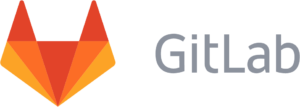Kore.ai provides integration for a built-in Gitlab Bot that you can use to display message notifications and execute tasks directly from your messaging channel such as Kore.ai Messenger. To use the Gitlab, you just need to add the Bot to your messaging channel, and then configure the settings for the Bot, such as authentication to access Gitlab, and the notification messages that you want. For more information about other Kore.ai Bots, see Adding Bots.
About the Kore.ai Bot for GitLab
 GitLab is a web-based Git repository manager with wiki and issue tracking features.GitLab offers hosted accounts similar to GitHub, but also allows its software to be used on third party servers. You can use this Bot to create new issues, receive notifications on pull requests, new commits, or issues created in Gitlab.
GitLab is a web-based Git repository manager with wiki and issue tracking features.GitLab offers hosted accounts similar to GitHub, but also allows its software to be used on third party servers. You can use this Bot to create new issues, receive notifications on pull requests, new commits, or issues created in Gitlab.
| Integration Type | Webhook – Connect to this Bot using a webhook integration where the web application pushes message notifications in near real time. Web Service – Connect to this Bot using a web service integration where Kore.ai polls the service for updates based on a specified interval. |
| Category | Developer Tools – This Bot is available in the Kore.ai application in the Developer Tools category. |
| Channels | Kore.ai – This Bot is available in the Kore.ai Messenger application. Spark – This Bot is available in the Cisco Spark messaging application. Slack – This Bot is available in the Slack messaging application. Skype – This Bot is available in the Skype messaging application. |
Configuring GitLab
The Gitlab Bot supports webhook and web service tasks. Webhook tasks provide near real-time notification messages as events occur in Gitlab, while web service tasks are manually activated or explicitly scheduled end-user tasks.
Configuring Webhook Tasks
To configure a GitLab webhook for Kore.ai, you must have a GitLab account with administrator access as well as API access to configure a webhook. If you don’t, you’ll need to contact the GitLab system administrator for your company. For more information, see the GitLab Documentation.
To get started configuring the webhook in GitLab, you’ll need two things:
- The Kore.ai webhook URL provided when you set up an alert in your messaging channel for each alert that you want to enable in GitLab.
- A valid Username and Password for an account with GitLab API access.
The webhook URL is account-specific and cannot be transferred to any other account. This means that if you configure a GitLab webhook using a test account, you will have to recreate the alert and get a new webhook URL to configure in GitLab. The following URL is an example webhook URL.
https://company.kore.com/hooks/c6089802f36250c179dcb1aa29afd24c
This procedure describes the steps in GitLab to configure a webhook using a Kore.ai webhook URL endpoint.
- Log on to GitLab, select your project, click Settings, and then click Web Hooks. The Web hooks dialog is displayed.
- In the URL field, enter the Kore.ai webhook URL for the alert.
- In the Trigger section, select one or more events that you want to get Kore.ai alert messages for.
- Click Add Web Hook to save the webhook configuration and close the Web hooks dialog.
For more information, see Webhooks in the GitLab documentation.
To setup real-time notifications in your messaging channel using a Gitlab webhook, for example, in the Kore.ai Messenger channel, click ![]() , click Get notified when…, click Website Alerts, and then in the Setup Task dialog:
, click Get notified when…, click Website Alerts, and then in the Setup Task dialog:
- click the Activate button to generate a Webhook URL.
- copy and save the URL, or click Email Instructions to send the URL to an email account. For more information, see Configuring Gitlab Webhooks.
- optionally customize the Task Name
- optionally customize the Short Description
- enable or disable Mute task notifications
- and then click Finish.
Configuring Web Service Tasks
To configure web service tasks, you need to add the Gitlab Bot from the Kore.ai Bot Store in your messaging channel, and then setup the task. After you add a web service task and are connected, you can perform tasks for Gitlab and setup message notifications to get notified in your messaging channel when an event occurs in Gitlab.
To setup a Gitlab task in the Kore.ai Messenger channel, click the New Task ![]() icon, click Create Issue, and then in the Perform Task dialog:
icon, click Create Issue, and then in the Perform Task dialog:
- select a Project
- select an Issue Title
- optionally enter a Description
- optionally select a Milestone
- optionally select Assign to
- optionally enter the Labels for an issue
- and then click Submit.
In a team room, you can enter the @gitlab createissue Bot command to invoke and configure this task.
Next Steps
After the task is configured, when any of the webhook events occur in Gitlab or the scheduled tasks run, a message is displayed in your preferred messaging channel.
